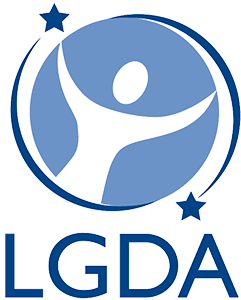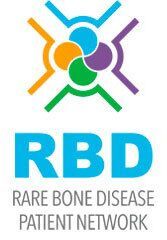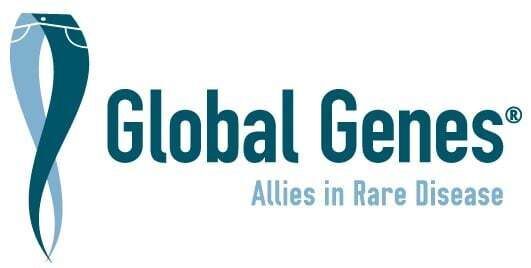From June 2022 CLA Seminar Series - Video
Presenter: Michela Rossi, PhD, Bambino Gesù Children’s Hospital, Rome, Italy
Gorham-Stout Disease (GSD) is a rare disorder that causes two main symptoms:
- lymphatic vessels grow and replace healthy tissue
- bone is broken down faster and it is not rebuilt - the bone wastes away.
The cause of Gorham Stout Disease is unknown. Common features of GSD include pain, swelling, easy bone fractures, and problems in the surrounding tissue. Around 300 patients in the world have been diagnosed with GSD, so far. This condition can affect people of all ethnicities and ages.
Gorham Stout Disease Diagnosis
It is hard to diagnose someone with GSD. One of the ways to find out if a person has GSD is to take X-ray of their bones. Doctors can use X-ray to find bone wasting – in some cases, over months or years, the bone slowly vanishes until it disappears. But X-Ray are not sufficient to diagnose GSD; Histological exams are needed, everytime. Doctors take a piece of vanishing bone and look at it under a microscope. If there are blood vessels growing into the bone, the patient has GSD. There is no cure for GSD.
How bone is usually remodeled?
Bone remodeling is a regular process that helps us maintain healthy bone. It is made up of the following steps:
- Big cells called osteoclasts dissolve the bone
- Osteoblasts lay down healthy, strong bone. These osteoblasts may become support cells for the new bone tissue.
In most people, the osteoclasts and osteoblasts work at the same rate. In those with GSD, the osteoclasts dissolve bone quicker and the osteoblasts are not prompted to rebuild it.
New Research
Dr. Rossi and her team want to understand why GSD happens in certain people. The aim of this study was to find out what changes happen at the cellular and molecular level that cause bones to weaken and disappear.
Results of studying bone
The team recruited ten patients from the Bambino Gesù Children's Hospital to study; these ten people ranged from children to adults and from mild to severe symptoms.
Dr. Rossi’s team started by looking at the samples from the patients’ wasted bones. They discovered that across the samples, about 60% of the inside of the weakened bone was made up of fibrous tissues. They also found more vessels in the affected bone than usual. Special stains confirmed they were overgrown lymphatic vessels.
To figure out why this was happening, the group studied osteoclast activity in the weakened bone. The osteoclasts in patients with GSD moved further than in others. They were also able to form faster than in healthy subjects.
Chemical signaling was measured. The following trends were found:
- One factor, ICTP, leads to bone reabsorption was higher in patient with GSD
- Sclerostin, which stops bone from rebuilding and promotes vessel formation, was high
- IL-6 was high. This factor activates osteoclasts while deactivating osteoblasts.
- VEGF-A was high, which encourages vessels to form in the bone.
Researchers then looked at how the genes were working in the abnormal osteoclasts. 106 genes were different in these cells compared to the regular cells. Many of these genes were important for the movement and development of osteoclasts.
Osteoblasts were analyzed too. The scientists collected osteoblast precursors from only one GSD patient and found that they had the same shape and properties as normal cells, but they can produce less new bone. Even though the scientists had one sample, they measured the gene activity of those cells. They found 72 genes were changed in a way that affects how bones grow. One gene, MMP-13, was overactive. This was an important discovery because it plays a role in bone cell breakdown and recruits blood vessels.
The team concluded that bones were harmed in GSD because there were more osteoclasts working at higher levels and but the same number of osteoblasts working at low levels.
The results of studying other cells
Additionally, bone rebuilding is affected by hormones, growth factors, and immune cells. Since there is a strong link between immune cells and bone, Dr. Rossi’s team studied specific immune cells, regulatory T cells, that stop the formation of osteoclasts.
Samples from GSD patients showed incredibly low numbers of regulatory T cells, meaning that GSD patients have too many osteoclasts breaking down bone. Interestingly, the T cells worked fine. This finding suggests that if researchers can find a way to increase the number of T cells in GSD patients, they may be able to treat the condition.
Meet the researcher
Michela Rossi is a post-doctoral fellow at Bambino Gesù Children’s Hospital in the Bone Physiopathology Unit headed by Dr. Andrea Del Fattore. Her research focuses on the biology and pathology of rare bone diseases, mainly Gorham-Stout disease and osteosarcoma, with the aim to identify new molecular targets to treat these diseases. Since 2020 she is the coordinator of the studies on osteosarcoma and on osteolytic bone diseases in the Bone Physiopathology Unit.










